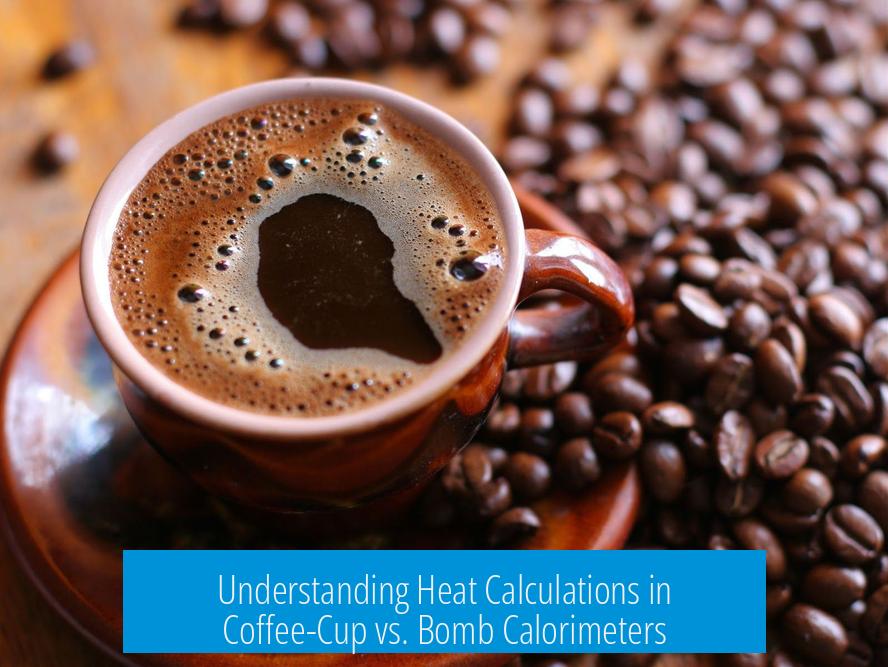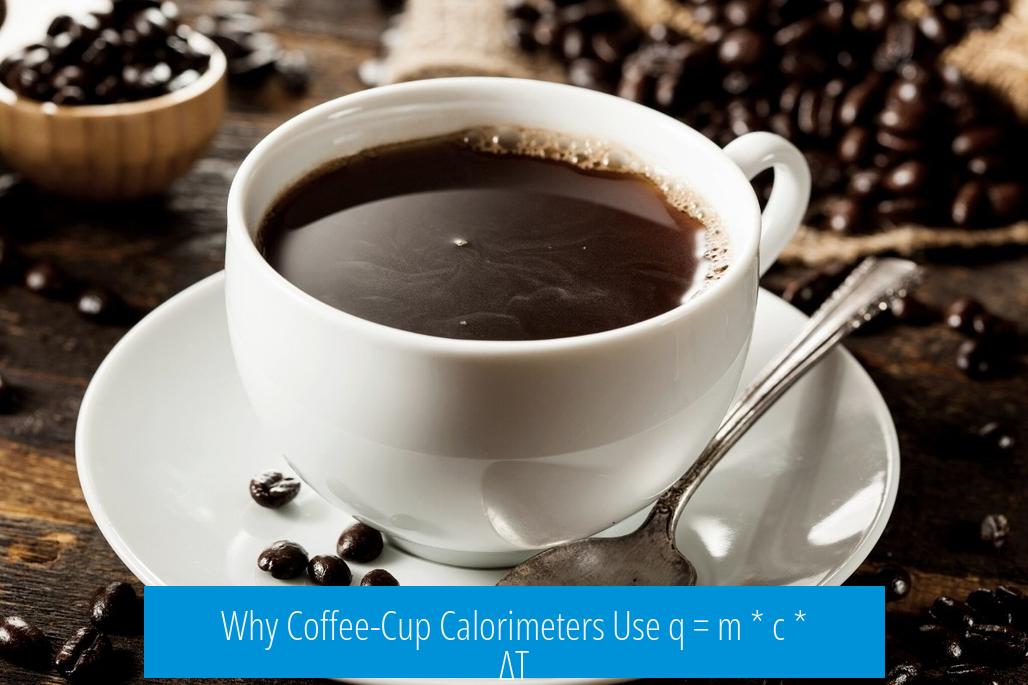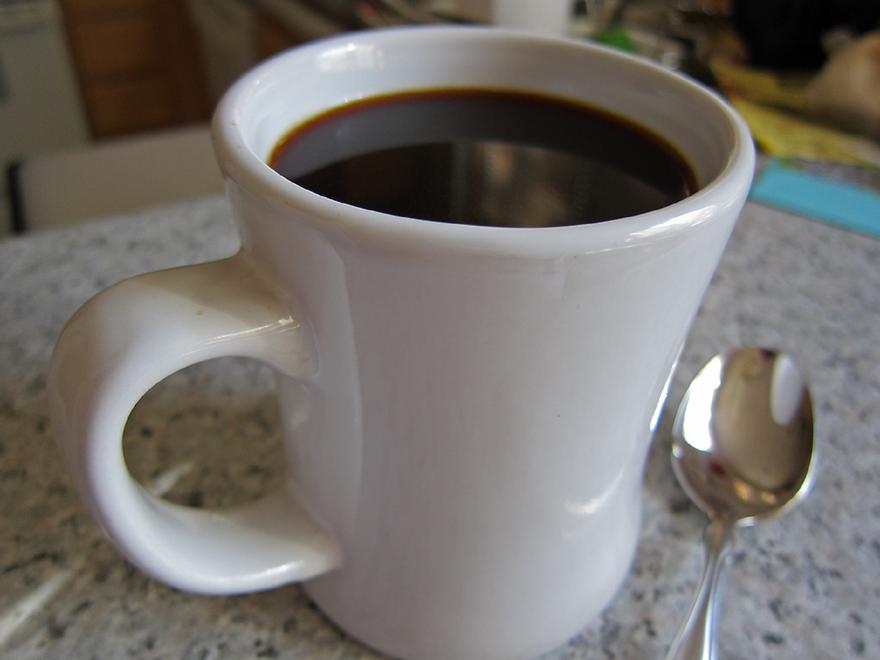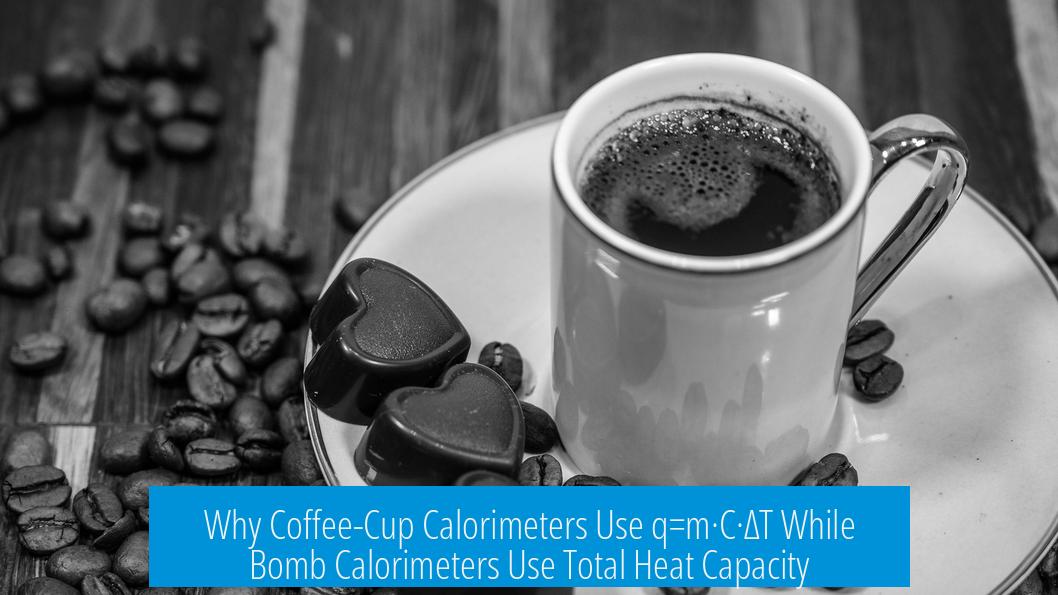Understanding Heat Calculations in Coffee-Cup vs. Bomb Calorimeters

Coffee-cup calorimeters use the formula q = m * c * ΔT because they calculate heat transfer based on the mass of the water or solution in the cup and its specific heat capacity. Bomb calorimeters omit the mass in the formula and instead use the total heat capacity (C) of the system, which already accounts for the masses and materials inside the calorimeter.
Differences in Heat Capacity Reporting
Heat capacity appears in three key forms:
- C: Total heat capacity (J/oC), refers to a whole system
- cs: Specific heat capacity (J/g oC), per gram of substance
- cm: Molar heat capacity (J/mol oC), per mole of substance
These forms influence how heat (q) is calculated, reflecting material amounts either explicitly or implicitly.
Why Coffee-Cup Calorimeters Use q = m * c * ΔT

- Coffee-cup calorimeters typically monitor heat change in water or solution only.
- The mass (m) of the solution varies and must be included explicitly.
- The specific heat capacity (c) is a property per gram, so multiplying by mass gives total heat absorbed or released.
- The container’s heat absorption is often negligible or accounted separately.
Why Bomb Calorimeters Use q = C * ΔT without m
- Bomb calorimeters feature a rigid container (the bomb) plus water and sometimes other calibration substances.
- The total heat capacity (C) of the combined system is determined experimentally beforehand.
- This C value already incorporates the masses and heat capacities of all components.
- Hence, heat transfer is directly calculated by multiplying C by the temperature change (ΔT).
Conceptual Explanation

The bomb calorimeter’s total heat capacity replaces the need to multiply by mass and specific heat separately. In coffee-cup calorimeters, mass varies with sample size, so it remains explicit. Bomb calorimeters operate under constant system conditions, making total heat capacity the practical parameter.
Key Takeaways
- Coffee-cup calorimeters use q = m * c * ΔT as mass varies and only solution heat capacity is considered.
- Bomb calorimeters use q = C * ΔT, where C is the known total heat capacity including the bomb and water.
- Heat capacity can refer to entire system (C) or per gram substance (cs), affecting the formula.
- Total heat capacity measurements negate the need to multiply by mass separately in bomb calorimetry.
Why Do Coffee-Cup Calorimeters Use q = m·C·ΔT, But Bomb Calorimeters Don’t Include the m?

If you’ve ever stood staring at a calorimeter formula wondering why coffee-cup calorimeters parade around with q = m·C·ΔT, while bomb calorimeters boldly ditch the m, you’re in the right place. The answer boils down to how heat capacity is reported and what the formulas actually represent in each setup.
Simply put: Coffee-cup calorimeters use q = m·C·ΔT because they calculate heat based on the mass and specific heat of the water or solution inside. Bomb calorimeters use q = C·ΔT because their heat capacity (C) already includes the masses and materials involved, making the additional mass term redundant.
A Quick Dive Into Heat Capacity Terminology
Heat capacity isn’t a one-size-fits-all concept. It’s a family of related terms, each with unique units and meanings. Knowing these helps unravel why formulas differ between calorimeters.
- Heat capacity (C): A total heat capacity of a system, reported in Joules per degree Celsius (J/°C). It represents how much heat the entire system absorbs or releases per unit temperature change, regardless of mass specifics.
- Specific heat capacity (cs): Given in Joules per gram per degree Celsius (J/g·°C), this value tells you how much heat one gram of a substance needs to change its temperature by one degree.
- Molar heat capacity (cm): This is Joules per mole per degree Celsius (J/mol·°C), focusing on the heat required for a mole of substance.
The key is, specific heat capacity depends on mass explicitly. The total heat capacity can be a measured constant for complex systems that bundle mass and material properties into one figure.
Why Coffee-Cup Calorimeters Flaunt m·c·ΔT

Coffee-cup calorimeters are simple, humble setups. They mostly involve water or a solution open to the atmosphere and a container. When you use q = m·c·ΔT here, you acknowledge both the mass of the liquid and its specific heat capacity. The actual heat change depends directly on those two factors. That means if you pour more or less water, you’ll change the heat absorbed or released, so the mass must be part of the calculation.
Imagine you’re stirring sugar into water and want to know the heat absorbed by the water as the sugar dissolves. You can’t skip mentioning mass because heat absorbed scales with it. So, multiplying the specific heat capacity by the mass and temperature difference gives you the heat flow.
In a nutshell, the coffee-cup formula looks like this:
q = m × c_s × ΔT
Where:
- m = mass of water/solution
- c_s = specific heat capacity of water or solution
- ΔT = temperature change
Bomb Calorimeters and Their Fancy Total Heat Capacity (C)
Now, bomb calorimeters are a different beast. These setups have a sturdy, sealed container (the bomb) with a sample inside, submerged in water. The entire system — bomb, water, bucket, everything — absorbs heat when the sample combusts.
The scientists who use bomb calorimeters don’t want to bother measuring masses of each component every time. So, the calorimeter’s total heat capacity (C) is calibrated beforehand. This total heat capacity already factors in the masses and the specific heat capacities of all components combined.
The heat absorbed by the entire calorimeter system when the sample burns is then simply:
q = C × ΔT
In this case, C is a pre-measured fixed value. Because it accounts for both mass and specific heat capacities internally, adding the mass explicitly would be doubling up.
A chemist once shared that every time they did bomb calorimetry, it felt like the mass and specific heat were “baking in” themselves, making the mass term unnecessary to mention.
Conceptually: Why m Disappears in Bomb Calorimetry

Think of it like this: a bomb calorimeter’s calorimeter has a total heat capacity C. That C is not just the specific heat capacity of water but something like:
C = mwater × cwater + mbomb × cbomb + …
Since that total heat capacity is a lumped value, the formula can treat the system as one big “black box.” You just measure temperature change and multiply by this single C number, no mass required outside of what has already factored in.
Why Is This Important?
Understanding this difference is crucial if you’re performing calorimetry experiments or just curious about how things heat up in different containers.
- Using the wrong formula: Applying q = m·c·ΔT with a bomb calorimeter’s total heat capacity would inflate results, a classic “measurement misstep.”
- Interpreting data: Knowing whether the system’s heat capacity is total (C) or mass-specific (c) guides you whether to include mass explicitly.
Fun Fact
Bomb calorimeters have been so reliable that many university labs calibrate their system’s total heat capacity once, then use it for years just by measuring temperature changes. It’s a major time saver. The coffee-cup calorimeter remains more hands-on, handy for solution chemistry where the solution’s mass keeps changing.
Summary Table
| Aspect | Coffee-Cup Calorimeter | Bomb Calorimeter |
|---|---|---|
| Heat Capacity Used | Specific Heat Capacity (cs) of solution | Total Heat Capacity (C) of system (bomb + water) |
| Includes Mass in Formula? | Yes — explicit mass (m) of solution included | No — mass is embedded in total heat capacity C |
| Formula Used | q = m·c·ΔT | q = C·ΔT |
| Suitability | For solutions of easily measured mass | For combustion of solid samples sealed in a bomb |
Final Thought
Next time you ponder your coffee or bomb calorimeter, remember: they’re both measuring heat, but their formulas reflect subtle differences in how scientists wrap mass and heat capacity together. One keeps it explicit and simple, the other cleverly bundles it up so you don’t have to keep track. Either way, both help us answer the age-old question: “How much heat did that reaction really make?”
Does your favorite calorimeter belong to the “coffee” or “bomb” club? And how might knowing this help you in your chemistry adventures?
Why does the coffee-cup calorimeter formula include mass (m) while the bomb calorimeter formula does not?
Coffee-cup calorimeters measure heat based on the mass and specific heat capacity of the water or solution inside. Bomb calorimeters have a known total heat capacity, which already accounts for mass and materials, so mass isn’t needed separately.
What is the meaning of heat capacity (C) in bomb calorimeters?
In bomb calorimeters, C represents the total heat capacity of the entire system, including the bomb and water. It combines the effects of mass and specific heat into a single known value used in calculations.
Why is the mass included in q = m*C*ΔT for coffee-cup calorimeters?
Coffee-cup calorimeters do not include the bomb, so only the water or solution mass is considered. The formula needs mass explicitly because the total heat capacity isn’t given.
How does the unit difference between specific heat and heat capacity affect the formulas?
Specific heat capacity is per gram (J/g°C), so mass must multiply with it. Heat capacity is total (J/°C), so mass is already included, letting bomb calorimeters use q = CΔT without a separate mass term.
Can the product of mass and specific heat capacity be considered a total heat capacity?
Yes. For coffee-cup calorimeters, mass times specific heat capacity equals the system’s total heat capacity. Bomb calorimeters use a pre-measured total heat capacity, simplifying calculations.





Leave a Comment